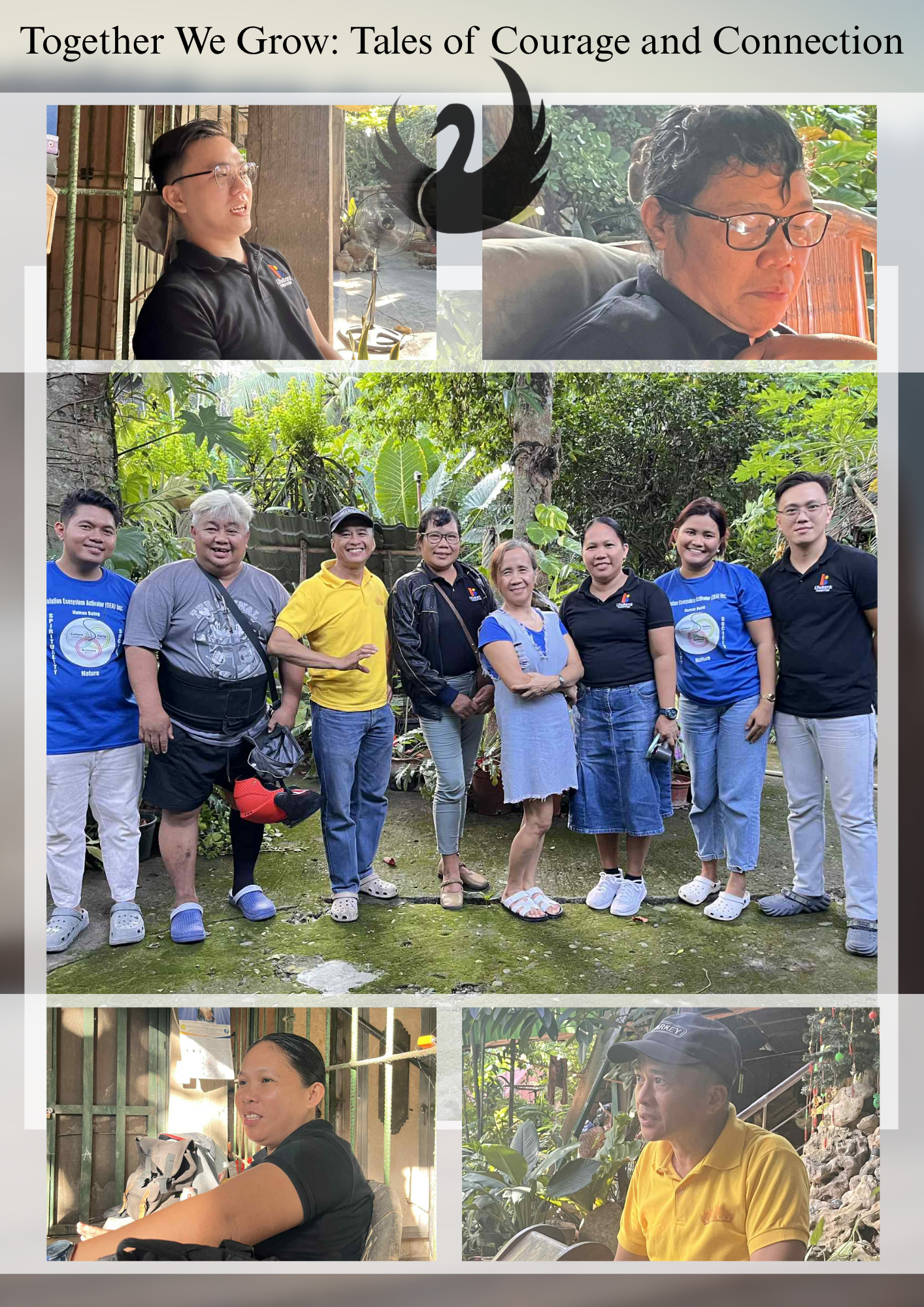In a small corner of Santa Barbara, stories are not just being told—they’re being lived, witnessed, and woven together through quiet acts of courage, care, and collective healing.
This week’s Inner Conditioning Workshop (ICW) Weekly Kamustahan with our Santa Barbara graduates wasn’t just a routine check-in. It was a living tapestry of resilience, a field of narratives grown from struggle, reflection, and solidarity. Within the ongoing efforts of the Solution Ecosystems Activator (SEA), Inc. and its Integrated Participatory Accountability and Transparency – Sustainable Integrated Area Development (IPAT-SIAD) program, these voices breathe life into what people-powered change truly looks like.
Batchoy’s Storm: Weathering Inside and Out
When a typhoon forced Batchoy indoors, it stirred not only the winds outside but also the emotional weather within his home. Between breaks spent scrolling on YouTube, Batchoy opened up about long-held frustrations—about inheritance disputes, strained relationships, and the unspoken pressures of being a father.
Despite the pain, Batchoy speaks with a kind of grounded clarity:
“There was no money, but someone still helped. My wife was angry, but I’m still thankful. I learned something, even through the pain.”
What cut deepest was not poverty or pressure, but being doubted by those he had helped. Yet, his spirit endures—not untouched, but unyielding. A farmer at heart, he keeps planting the seeds of resilience, even on soil muddied by mistrust.
“If you don’t want to pay, then don’t. What hurts the most is when the very people you helped are the first to doubt you.”
Julroy’s Soil and Soul: Building from the Ground Up
While others rested, Julroy was on the move—facilitating certifications for ten organic farms in just one week. From soybeans to mushrooms to measuring soil vibrations in hertz, his work is a seamless blend of science, advocacy, and soul.
“If before, only three farms could be certified in a day, now it’s ten.”
For Julroy, the dream is bigger than productivity. He envisions Santa Barbara as a global model for sustainable and soulful agriculture. In his vision, the farm is not just a field—it’s a foundation for dignity.
Atchmen’s Grit: Walking Through the Storm
Even as the flu crept in and winds howled from a recent storm, Atchmen showed up—with boots muddied and heart steady. Continuing his facilitation work in Balibagan Oeste despite illness, his quiet presence reminded everyone what real commitment looks like.
“I’m tired, yes. But those who are relying on us would be even more exhausted if we gave up.”
This isn’t just work. It’s purpose. It’s SEA’s mission in motion. It’s IPAT values with mud on its shoes and hope in its hands.
Jean’s Journey: Choosing Strength in the Wake of Betrayal
A flooded house. A broken heart. And still, Jean stood tall.
Her story is one of inner clarity forged in chaos. She didn’t just endure betrayal and displacement—she chose healing. She chose boundaries. She chose herself.
“Sometimes, saying ‘that’s enough’ isn’t the end—it’s the beginning of a new life.”
Jean is no longer defined by what happened to her. She now defines her own space, her own voice, her own path—guided by inner work and the values that SEA nurtures in every Kamustahan.
What These Stories Teach Us
These aren’t just personal accounts. They are windows into a collective awakening.
Batchoy, Julroy, Atchmen, and Jean offer us different paths—but all lead toward a shared destination: a more human way of working, living, and transforming communities. They show us that IPAT-SIAD is not just a development strategy. It’s a way of being—accountable, heart-driven, and community-rooted.
As Nicanor Perlas wisely said:
“Development without dignity is like planting without water. It may sprout—but it won’t thrive.”
So we plant—truth, trust, transformation. In soil and in spirit.
Because in every story shared, there is a seed of hope.
And where there is hope, there is SEA.





Leave a Reply